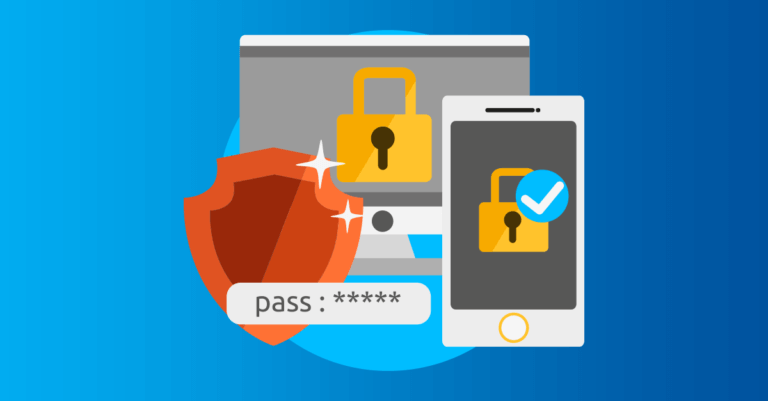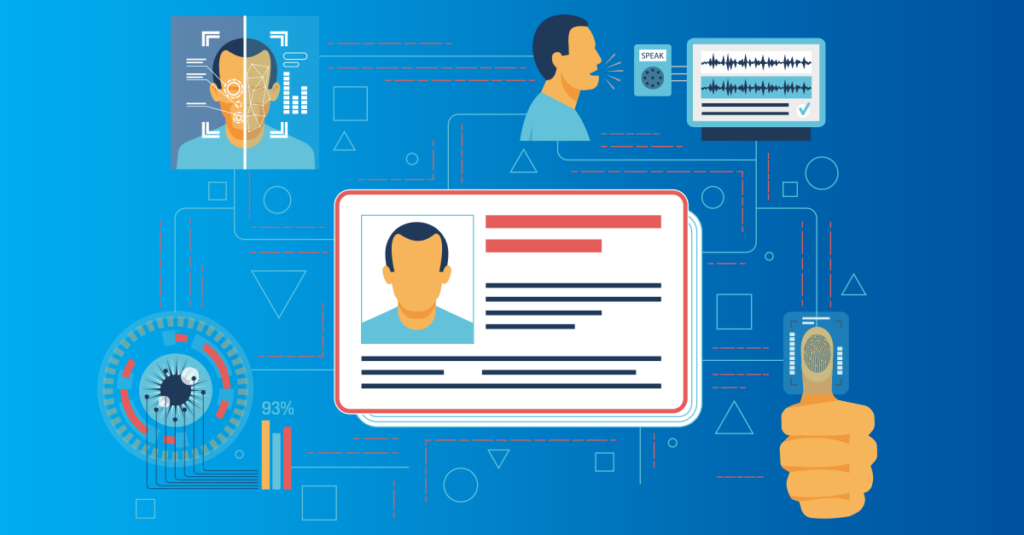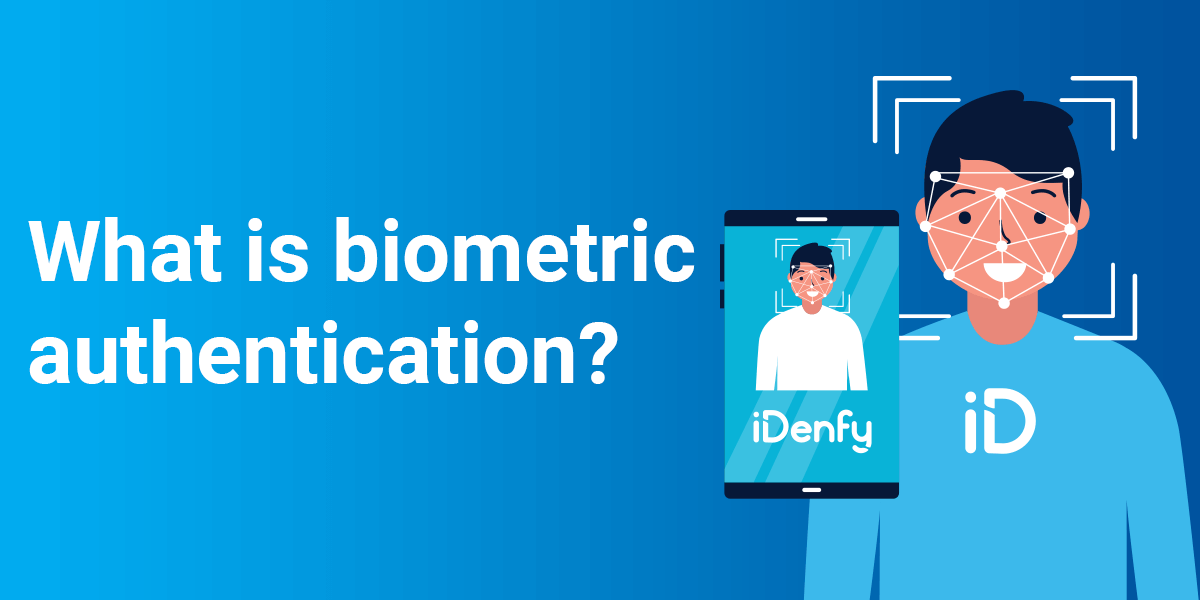Biometric authentication systems are extremely authentic and unique in assessing and differentiating an authorized person from an unauthorized one. If the identity of the person is verified from biometric authentication, then access to the device or secured area is granted. Otherwise, other security-related events are triggered to protect the assets being approached by unauthorized users.
Continue reading to find out more about the power of identity verification through unique biological characteristics and learn about what exactly biometric authentication is.
What is the Difference Between Biometric Authentication and Identity Verification?
Biometric authentication and identity verification are related concepts but differ in their scope and approach.
Biometric authentication refers to the process of verifying a person’s identity using their unique biological characteristics, such as fingerprints, retinal scans, facial features, or voice patterns. It relies on advanced technology to compare the captured biometric data with pre-registered or known data to authenticate the individual.
Identity verification encompasses a broader concept that involves checking an individual’s identity using various means, including but not limited to biometrics. It incorporates multiple methods such as documents, credentials, knowledge-based questions, and social media profiles. Identity verification aims to establish the authenticity and trustworthiness of an individual’s claimed identity by cross-referencing different sources of information.
While biometric authentication can be a part of identity verification, the latter encompasses a wider range of techniques and data sources to ensure a comprehensive validation process.
What are the Key Biometric Authentication Use Cases?
Biometric authentication offers numerous compelling use cases for businesses across various industries. One prominent example is access control and physical security. By implementing biometric authentication, businesses can enhance security measures by ensuring that only authorized individuals can access restricted areas or sensitive information.
Biometric identifiers like fingerprints or facial recognition provide a higher level of security compared to traditional methods like passwords or access cards, which can be lost, stolen, or shared. This helps mitigate the risk of unauthorized access and potential security breaches.
Other popular examples of biometric authentication use cases:
- User authentication
- Access control
- Fraud prevention
- Payment security
- Airport security
By utilizing biometrics, such as fingerprint or iris scans, companies and financial institutions can strengthen customer authentication and significantly reduce the risk of identity theft, account takeover, and other fraudulent activities. Biometric authentication adds an extra layer of security that is difficult to replicate or deceive, enhancing trust and protecting both the business and its customers.
Ensure your customers are real. Schedule a free demo here.
Traditional Biometric Authentication Methods

There are a variety of options when it comes to authentication of the true identity of a person, such as traditional authentication methods.
These methods are necessarily old and don’t back up the very foundation of digital technology they are developed to protect, meaning that these traditional systems can’t serve in a highly advanced and digitally palpating era.
However, a few of them are mentioned here for your ease and convenience in determining the adversity that surrounds these traditional systems of authentication.
Password-Based Authentication
This is a way of authenticating your identity over the internet by scrolling through websites and clusters of servers that grip a particular website together. It is considered a traditional way of authentication because passwords can be unique and serve to protect your digital assets on the internet can easily be hacked or manipulated.
When you have to access something confidential or private to a particular user, say yourself, then you would have to provide a valid username and a password to the server, which would authenticate against the hash data stored within it. If everything goes smoothly, then access to your secured content is granted; otherwise, not.
Knowledge-Based Authentication
Knowledge-based authentication is used by various websites and companies as the proprietary means to grant access to the right users. Suppose you have to grab access to a particular site that uses this protocol what would you do? Well, for starters, you would have to answer a series of security questions otherwise known as KBA or knowledge-based authentication protocol.
These security questions are already provided to you by the company or website you are trying to access. This is one of the most entailing security parameters companies implement to keep information safe in the right hands.
Token-Based Authentication
If you attend to the existence of a token on its own, then it has no particular meaning in the whole world wide web. But when combined with the right set of data or introduced into a tokenization system can be used to request access to secured channels of information. Such assets are meant to be secured or encrypted from access from illicit cybercriminals or unauthorized users.
The tokenization system will generate a request on your behalf having a digitally signed token which then would be authenticated by the server to grant access.
Verify customers identity within 15 seconds. Schedule a free identity verification demo here.
Out-of-Band Authentication
Out-of-band authentication, in reality, is a two-factor authentication system (2-Step Verification or Multi-Factor Authentication) that takes into account the users trying to access the encrypted channels to provide a second source of authentication.
The first factor could be a key phrase or a password; the second factor would be to enter another pin sent by SMS to your registered mobile number or make a call from that same phone number to access your account. Mainly financial institutions are more derived to practice such methods of authentication for their safety and of their customers.
Disadvantages of Traditional Biometric Authentication Methods
There are several reasons why businesses are increasingly turning away from traditional password-based authentication methods:
- Poor user experience: Customers can easily forget their passwords, leading to frustrating experiences and the need for frequent password resets. This creates inconvenience and increases the onboarding friction for new application users.
- Pressure on support teams: The reliance on passwords strains support and internal IT teams. They must handle numerous password reset requests and manage password databases and systems, consuming valuable time and resources.
- Password fatigue: With more people using multiple apps regularly, they tend to choose the same password for all accounts, making them vulnerable to criminals and their sophisticated attacks. In addition, these passwords are often weak and easily guessable, posing a major security risk for the user and the company.
In general, it’s essential to evaluate the specific requirements of each scenario to determine which authentication method strikes the right balance between security and usability. By considering the purpose and ease of implementation, companies can choose the most appropriate authentication solution that aligns with their goals and optimizes the user experience while maintaining the necessary compliance measures.
Examples of Advanced Biometric Authentication Technology

The more advanced level of authentication system comes with a digital array of recognized elements by this technology that can be used to authenticate a potential user. We provide a few generalized types of biometric authentication technology below:
Fingerprint Scanners
The verification of your identity is brought together with the help of authenticating your identity via your fingerprints. When your finger or palm registered within the scanner touches the scanning surface, a digital code is automatically generated and cross-referenced with the one secured within the servers to grant access.
Retina and Iris Recognition
Verifying your identity, such as unlocking a secured device or having access to an otherwise sealed/confidential area, can also be regulated by using retina authentication. Retina and iris scanning are done by advanced scanners that map out the physical structure of the retinal or iris tissues of the human eyes and then cross-reference the details to grant access.
Voice Detection
This is rather an advanced approach in which you would have to speak aloud a particular phrase or sequence of numbers, vowels, or words to help the voice detection system to authenticate your identity.
Facial Recognition
Facial recognition is extremely common these days and is extensively practiced; your face is scanned with the help of highly detailed infrared segmentation using a highly advanced camera system. Your face is mapped into digital arrays for the detection system to authenticate, and once approved, you will be granted access at once.
What is Liveness Detection?
Biometric authentication measures frequently consist of supplementary technology that enhances security, and liveness detection is a commonly adopted approach.
Liveness detection is the most advanced and potent authentication-based technology you can come around to this date. It uses a special algorithm stored within the digitally advanced security systems to ensure that the image of the face or that of the retinal or iris scan the system receives comes from a trusted, authenticated, and alive source. This system can beat any fraud or spoofing done by unauthorized personnel to gain access to the secured systems.
Fraud detection and prevention service from market leaders. Schedule a free demo here.
How iDenfy Uses Biometrics in the Identity Verification Process

As you have come around, both the traditional and biometric systems of authentication can be used to verify a user’s true identity from that of fraud or imitator. Biometrics have relayed a digitally advanced and potent security system that can help you in today’s advanced and dangerous world out there.
All your effects, data, or information are better secured under the biometric-based identity verification systems, as each verification process is designed to cross-check the information using a secured and error-free approach. It is to determine that it is an authenticated user trying to access their digital data using secure and authenticated channels regulated by the biometrics systems for user verification.
Here in iDenfy, to provide identity verification service, biometric verification systems like face recognition and liveness detection are essential parts. If you don’t know which biometric authentication fits your business needs, we are always happy to consult you free of charge.
Drop us a line to learn more and get a free demo.
This blog post was updated on the 2nd of May, 2024, to reflect the latest insights.




